Post Mortem (2020)
Directed by: Péter Bergendy
Written by: Gábor Hellebrandt, Péter Bergendy, Piros Zánkay
Starring: Andrea Ladányi, Fruzsina Hais, Judit Schell, Viktor Klem
HUNGARY
RUNNING TIME: 118 mins
SCREENING AT GRIMMFEST EASTER 2022 FESTIVAL
REVIEWED BY: Dr Lenera
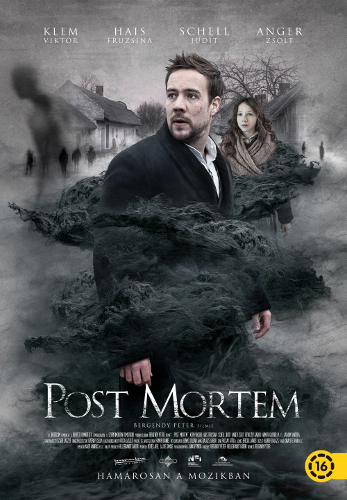
In 1918, German photographer Tomás is knocked down on a battlefield by a bomb-blast but seems to be brought back to life by a vision of a young girl leaning over him and calling his name. After the war, he joins a carnival where he works as a post-mortem photographer, posing and then photographing images of the dead with their loved ones as momentos. Business is good because the Spanish Flu pandemic is raging. He’s visited by ten year old Anna, who’s the spitting image of the child who somehow seemed to save his life. She asks him to travel to her village to photograph the many dead there, stored in a barn because the ground is frozen. However, the dead seem to be acting up, and, though once harmless, they are now doing it in an increasingly unfriendly fashion….
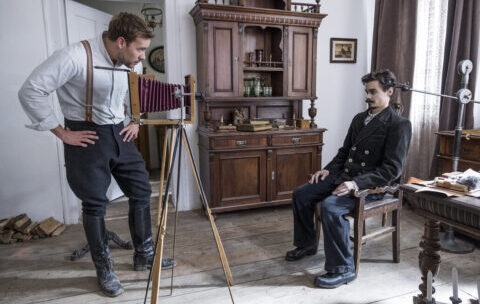
There’s a scene in Post Mortem where little Anna meets her friend Marcsa of the same age and he’s wearing one of those sackcloth masks which were so sinister in The Orphanage. He says that he feels safe with her and takes it off, but then his mum runs up angrily, puts it back on and whisks him away. Such a moment seems like it’s crassly exploiting Covid anxieties, but actually Peter Bergendy’s film, not quite the first Hungarian horror film but certainly one made in a country that has no real genre heritage, was made just before the nightmare of the last two years, so he can’t have known what was coming, and making a ghost story during the pandemic that hit just after World War 1 probably seemed like an ideal setting, especially it being exactly one hundred years later. I wanted to get that out of the way early so I can then not mention it again, and that should be easy, because Post Morten, while it has slight shades of films as diverse as Viy and Photographing Fairies, is quite a fresh slice of supernatural shenanigans, one of the reason for this probably being because Hungary has made very few works in the genre, not in spite of. Taking place in an painterly photographed wintry village, its passages of extreme eeriness and poltergeist violence sometimes attain genuine terror, while one can only be morbidly fascinated by the queasiness of our hero’s profession which we see a hell of a lot of. Things fall down a little bit in terms of plot; one is more likely to accept vagueness in a film like this than in many other types, but a few moments and story turns don’t really come off. Still, the film often really works in the way that it was intended, and sometimes the horror fan can’t ask for any more.
Set up is nice and brisk. We start off in the middle of a battle as charging soldiers are blown into the air and into bits by mines and bombs. It’s quite intense, but before we’ve really had time to get settled we focus on Tomas as he’s knocked out or killed by a bomb, and this is worth noting; we never know, until the final act, whether he was actually temporarily dead or not. In fact I might have preferred if this had remained ambiguous, but never mind. After the battle where the mud bath now consists largely of corpses and crosses, he’s heard coughing and is pulled out of a pit by somebody credited as just an Old Man. Six months later and the same girl that Tomas glimpsed in his possibly near-death experience is wondering through a busy town. Huh? Well, the conundrum is never answered or even referred to. Does this matter? Not particularly I guess. At a carnival the Old Man is now The Man Who Came Back From The Dead, embellishing Tomas’s tale to entertain a gullible public, while the more shy Tomas is working in a room at the back, his job very much to do with death like many before him who’ve come back from the brink. It’s probably hard to believe because it seems so macabre, but post-mortem photography was a big thing in Victorian times, so if you were not just a decent photographer but were willing to make corpses look as alive as you could possibly could, even to the extent of snapping their stiff limbs and necks into lifelike, natural poses sometimes with armatures, you could do pretty well for yourself and customers would go away with what they considered to be a lovely memento. “Ugh” you might say, and indeed so do I, though you can imagine somebody like Mario Bava absolutely loving these moments which are not just very interesting to watch but also slightly humorous. “Do you take photographs of ghosts too?” asks one of his customers. “Ghosts don’t photograph” is the reply, which immediately suggests that, soon, they will.
Anna gets him to go to do his job in her village, but here’s the thing – I get the sense that she knowingly brought him there because of the paranormal activity going on, yet that’s silly because surely a priest would have been a better choice. Then again she is only ten, though most of the time seems to be wise beyond her years. The two arrive and cinematographer Andras Nagy makes the place look bleakly beautiful with some really nicely composed tableau, but we know something’s up right away when we hear a man crying “never. never, no!”, a dog won’t stop barking and jumping at Tomas though – hang on! – it may not be Tomas he’s barking at, and Anna attends to her wheelchair-bound mother who can’t speak because of a stroke. Though it’s not a very nice thing to say, we do automatically get slightly creeped out by old ladies who don’t speak yet who clearly know rather a lot, and figure that they will go on to play a major part in the story later. Anna takes Tomas to a graveyard where she poignantly mentions all the dead there, that she used to smoke cigarettes there, and that she basically died at birth, strangled by her umbilical cord but revived by her mother. However, your mind may still be dominated by the stunning image that began the scene, a long-distance shot of black ground and trees against gray sky where we can just about glimpse the two walking in the distance and a cross in the middle; gloriously Gothic! Tomas starts to do his work but he also hears running on the roof and cries coming from rooms, while glimpsing shadows and even puppeteered corpses. And yes, ghosts do photograph, in some of the eeriest playing around with pictures since Ringu. But why are the ghosts now turning nasty? Tomas seems to be important, but how?

The answers to these things are quite simple, which is fine in itself though certain parts of the plot rely on awkward or awkwardly translated dialogue. At one point Tomas has had enough of both the ghosts and the villagers and leaves, but a vision of Anna in trouble brings him back. “Did you come back because of me?”, “Yes, because of you”, “Good” is the slightly odd exchange that follows. Then there’s the bit where the villagers suddenly obey somebody they wanted to drive out only a few minutes before. Marcsa the landlady of the place that Tomas is staying at is extremely cold to him, then is suddenly really welcoming and even admires his naked body, though perhaps thankfully there’s no time for romance in here. Saying that though, it’s possible that some viewers may find the relationship between our two lead characters to be a little – well – off. I don’t myself, seeing Tomas as basically a father figure even though the pair virtually come across as equals, and there’s nothing in Piros Zankay’s screenplay, from a story by Bergendy and Gabor Hellebrandt, that suggests anything dodgy going on. However, I do reckon that some may interpret things otherwise. In any case, they make a cool team, Viktor Clem and Fruzsina Hais definitely sharing some chemistry even though neither seem to be particularly good performers really. Hais in particular seems to be stuck on one expression for most of the time, yet she also has a strong screen presence which sort of makes up for this.
In terms of horror things are rather good in a film which is paced pretty well. The climax is the only place where the film does seem to actively borrow a bit, with some use of J-Horror tropes and a set piece which will seem rather familiar indeed to those who’ve seen a certain film from 1982, though things don’t at all become stale because it’s quite exciting seeing a Hungarian film do this kind of stuff. Bergendy certainly shows his horror chops when Tomas spends his first night in the boarding house, hears noises [including a nightmarish cry] and goes to investigate without turning any lights on. Yes, he’s a fool, this being something that characters always do in horror movies even if most of us would probably do the sensible thing and stay in our rooms, but it’s rather lovely that such cliches are universal. The suspense is terrific, the photography is good with its emphasis on blue and yellow [though strangely white seems to be the dominating colour generally] during a walk down a corridor, and, just when things seem to calm down, it finishes with a highly effective jump scare which doesn’t need a loud musical chord just a quiet one, and which even gave poor old Doc a jolt. There’s a lot of unsettling stuff with corpses and even more scenes of folk being lifted into the air, being dragged around etc. The latter are generally well staged and executed, and kids and old people are among those who are subjected to this which makes things more frightening. Wirework and some really effective makeup [notably an eyeless boy who’s really more of a zombie than a ghost and the hideous face of a horribly burnt corpse] mixes with CGI elsewhere of reasonable quality. There’s very little blood, but then again this is essentially a ghost story of the traditional kind.
There’s an extremely menacing music score by Atti Pacsay which is heard throughout, becoming an essential but never overbearing part of the sound design in a film which makes sure that its environment feels real despite what goes on in it. Post Mortem stumbles occasionally, and its final scene somehow doesn’t seem right but it nonetheless generally intrigues and chills in a satisfying fashion, so lets hope that it leads to more cinematic tales of terror from Hungary.





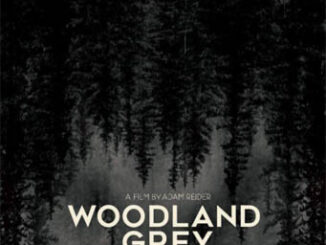
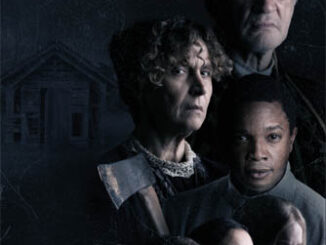
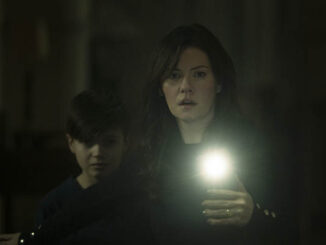
Be the first to comment